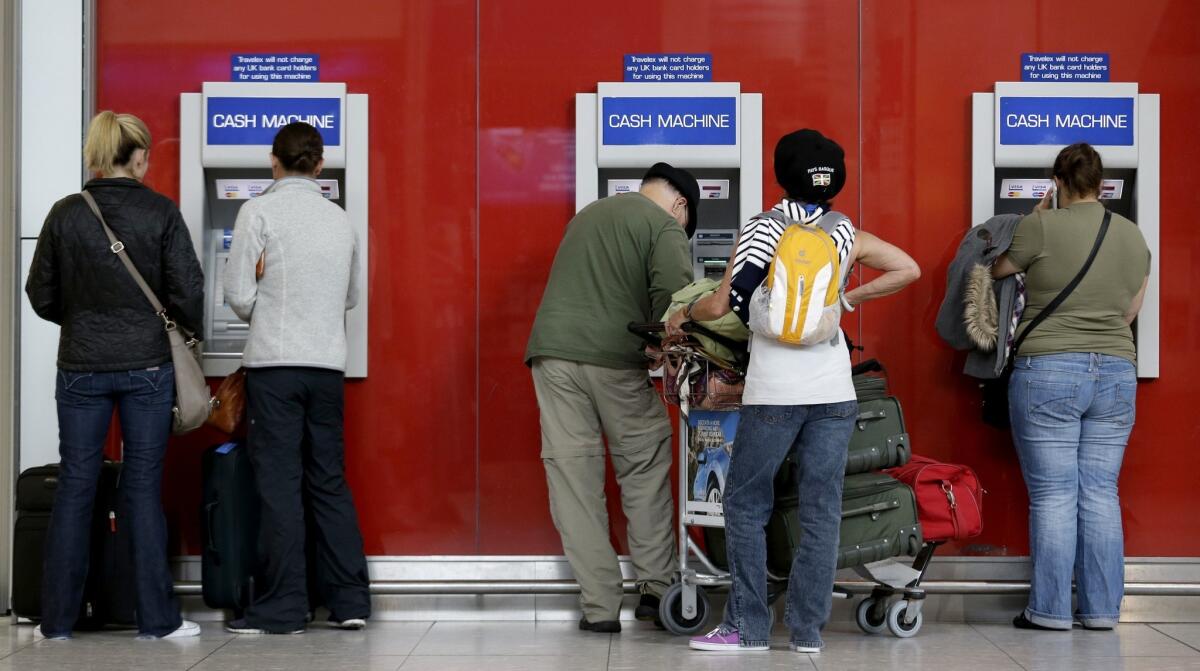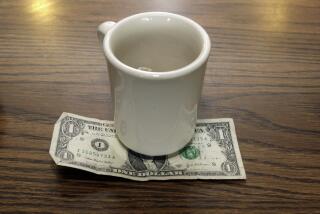More for Your Money: VAT refunds and other ways to save when traveling

On a recent three-week vacation, I was reminded — forced to remember, perhaps — that there are plenty of ways to save: There are cheaper alternatives or ways to get discounts for almost anything. You can even get money back on that extravagant pair of boots or replacement lens you just had to buy.
Tipping: I was a waitress once, so I leave good tips. But when you’re abroad, it can pay to know the customs and read the bill.
In Japan and South Korea, tipping is frowned upon. In China, it’s usually considered insulting. France, Switzerland, Finland and the Czech Republic, among others, have laws requiring the tip/service charge be included in the final cost. Usually you can find a clue about the tipping question on the bill: “Service compris” in France; “Servizio incluso” in Italy; “Servicio no incluido” in Spain.
Unfortunately, you may not find anything about tipping on your bill. What do you do? As difficult as it may be, you can ask.
That may be important in some places because terminology isn’t always clear. You may order room service, for example, and the bill says “Service is included,” but there’s still a line labeled “Tip.” Ask. It may also be that the money never makes its way to the server at all.
Stand for good: Get a crepe, a baguette sandwich, a slice of pizza or a falafel at a window-service eatery or food stand, food truck or kiosk. The locals do. This is best for lunch, when you’re in the middle of seeing and doing things while everything is open. It’s also best in places where you’re fairly certain you won’t get sick from whatever’s in the sandwich.
Make breakfast last: Some places offer a free breakfast. It’s the most important meal of the day nutritionally — and financially. A big breakfast can take the place of lunch. In some cases, it pays to upgrade to a better room. I paid an extra $41 a day for a room with a view at one hotel. With that I got breakfast, all the coffee I could drink all day, and free Wi-Fi.
ATM nickel and diming: Those $1.50 fees for withdrawing money can add up. Today, banks are following the airlines’ lead with alliances. Your bank is probably part of a group of banks, some of them in other countries. With my Bank of America debit card, I can now consider all the members of the Global ATM Alliance my buddy banks abroad. If I use my card at any cash machine owned by an alliance member, I save on transaction fees. Bank of America also waives the international transaction fee (a.k.a. foreign conversion fee) at member ATMs.
Vat’s a VAT? If you’re traveling overseas, you’ll need to know that VAT stands for value added tax, a kind of a sales tax the locals pay. What it means for nonlocals is bucks back.
Here’s what you need to know: First, your purchase has to qualify. You need to spend at least the required minimum all in one day and in one store or place. Then you have to ask for the VAT paperwork; usually any manager or shop owner can do this, but in a big-box store you usually have to go to an office somewhere. You need your passport number, so carry it (secure) whenever you might be shopping.
When you’re leaving for home, take your form(s) and your purchases to the refund desk, window or office at the departure airport. Because you need your boarding pass and your purchases, you can’t check all your luggage until after you go to the VAT. A hassle, but now you’re near the payoff: After the official does the official stamping of your forms, your refund is nearly a done deal. If you are getting the refund in cash, you take your form to a cashier. I got $25 back from a camera lens I bought in Paris. You can also get your refund on the credit card you used for your purchase, but you must mail the form.
More to Read
Sign up for The Wild
We’ll help you find the best places to hike, bike and run, as well as the perfect silent spots for meditation and yoga.
You may occasionally receive promotional content from the Los Angeles Times.






